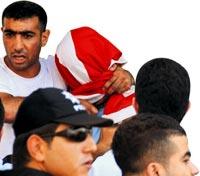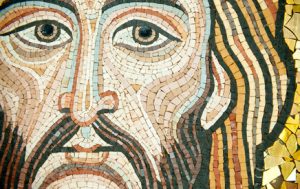At least twelve people are dead in Paris because two brothers (maybe others as well) were so offended at a crass cartoon, lampooning their religion, that they decided execute some of their fellow countrymen.
Reactions from politicians and pundits alike have been swift, and responses will continue to trickle in in the coming days and weeks as suspects are apprehended, motivations and institutional ties are queried, and responses are considered.
I usually deal with lighter fare at Le Blog, but as we at LiberalEvangelical.org are a group dedicated to the open discussion of religious differences, especially among Evangelicals of a progressive bent, I thought I should weigh in. But I have absolutely nothing to say that others with more access and better credentials aren’t already saying about the situation in France. So I’ll relay a simple anecdote about something that happened in one of my World Religions classes a few years ago. All I want to do here is tell the story; I won’t offer much by way of commentary. I think the story speaks for itself. I’ll use only initials so as to protect the anonymity of my students. Suffice it to say that I wish the ethos of my classroom that day were a more common phenomenon throughout the world.
Several years ago (I believe it was the Winter term of the 2011-2012 school year.) in my Introduction to World Religions class, I experienced one of those classroom moments that will stick with me for the rest of my life. The thing is, it passed almost without notice and I’d be shocked if many of the forty or so students in that classroom that day even recall the incident. I used to end the first half of our semester with three days of student presentations on specific liturgical or ritual practices in the three Abrahamic faiths. This meant that groups of two to three students each had about fifteen minutes to do a short presentation on Sukkot or Purim, Pentecost or Lent, the Hajj or Ramadan. As is usually the case, the presentations were of mixed quality and I had to interject corrections or additions at times. I have since stopped using this assignment because it proved too ungainly as the class expanded to include Chinese traditions.
On the particular day in question three students (three very good students I might add) were set to do a brief presentation on Ramadan. As is common with today’s technically savvy college students, they opened their laptop, plugged in a projector and began their PowerPoint presentation. It was a great presentation, replete with pertinent visuals, timelines, and relevant information. Ramadan, as you may or may not know, is largely a celebration of the giving of the Quran. It’s nearest equivalent in Christianity would be Christmas, for Ramadan is a time for remembering the moment when Allah sent his final and complete revelation to humanity. The students did a nice job talking about the importance and purpose of fasting and the relevant celebrations that occurred at the end of the fast. All the while one of my favorite students, a devout young Muslim man named K. sat in he front row nodding his head approvingly. When the presenting students asked for questions or comments K. raised his hand and shared some of the things his family did during Ramadan and affirmed the broad points of their presentation.
Then it happened. The students moved on to their summary slide and there in the middle of the screen they had a drawing of the Prophet Mohammad writing as the Angel Gabriel recited to him. Now, it is not the case that all Muslims object to images of the Prophet. Indian Muslims in particular have a long tradition of iconography, but many Muslims, especially Muslims from more conservative backgrounds, object to any depiction of the Prophet. K. was from a conservative family and I knew that he would never himself depict the Prophet. I glanced at him to catch his reaction. And he just smiled. To this day I remember that smile.
I spoke up. “Excellent presentation,” I said to the presenters, “lots of good information there, but one thing. Many Muslims stress that it is important to avoid any hint of idolatry, so they do not depict the Prophet.” Even as I said this I saw their faces drop. They were horrified. The quickly changed slides and began to offer apologies. Almost automatically they looked to K. apologetically. And there he was, still smiling. He just shook his head and said, “It’s ok. You didn’t know. We just try to be respectful and careful.” And that was it. No outrage, to histrionics, no garment rending apologies. Just smiles. These young people simply recognized the good intentions on both sides. No one meant to offend, and no one was offended. We need more stories about these kinds of interactions and more importantly, we need more people of good will like those students.



